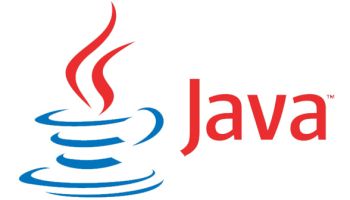Oracle Opens Java 7 For Consumer Download

Java 7 is now available for consumers to download via the Java.com website, Oracle has revealed
Oracle has confirmed it has made Java 7 the default version of the Java Runtime Environment (JRE) available to consumers on Java.com.
On 2 May, Oracle said it will now begin the process of upgrading its user base to the Java 7 release. Over the next several months Java users will be automatically upgraded to Java 7.
Upgrade Reasons
Oracle recommends that Java users always run the most current version of the platform to take advantage of the latest features, functionality and security fixes. Consumers can go to java.com to check to see what version of Java they are currently running and download the latest release. Oracle recommends removing older versions of Java when users upgrade to new versions.
Go to the Java.com FAQ for additional details and instructions.
This move comes a week after Oracle announced the release of Java Platform, Standard Edition 7 Update 4 (Java SE 7 Update 4) and JavaFX 2.1 on 26 April.
This release marks Oracle’s first delivery of both the Java Development Kit (JDK) and JavaFX Software Development Kit (SDK) for Mac OS X.
 Oracle is continuing its work to merge the Oracle Java HotSpot JVM and the Oracle JRockit JVM into a converged offering that leverages the best features of each of these leading virtual machines. With the release of Java SE 7 Update 4, all of the performance enhancements available in Oracle JRockit have been merged into Oracle Java HotSpot and OpenJDK, the open source Java SE implementation. The new JVM, Java HotSpot Virtual Machine, version 23, features JRockit JVM feature convergence. Some of the value-add features of the JRockit JVM are re-implemented in the HotSpot JVM.
Oracle is continuing its work to merge the Oracle Java HotSpot JVM and the Oracle JRockit JVM into a converged offering that leverages the best features of each of these leading virtual machines. With the release of Java SE 7 Update 4, all of the performance enhancements available in Oracle JRockit have been merged into Oracle Java HotSpot and OpenJDK, the open source Java SE implementation. The new JVM, Java HotSpot Virtual Machine, version 23, features JRockit JVM feature convergence. Some of the value-add features of the JRockit JVM are re-implemented in the HotSpot JVM.
Overall on 27 April, Oracle Java teams have delivered update releases for Java SE, Java FX and Java SE for Embedded.
Aggressive Plans
“Oracle has aggressive plans for Java over the next few years and we are continuing to drive technical advancements across the platform,” said Hasan Rizvi, senior vice president of Oracle Fusion Middleware and Java Products, in a statement upon the release of Java SE 7 Update 4. “At JavaOne in 2011, we outlined our long-term roadmap for Java SE and JavaFX and we are working closely with the Java community to meet our development milestones. With the upcoming Mac OS X port, we look forward to delivering simultaneous releases of the JRE across all major operating systems later this year, so all Java users will be able to take advantage of the latest features and security fixes.”
Java SE 7 Update 4 features include the next-generation Garbage Collection algorithm Garbage First (G1). And Java SE 7 Update 4 is the first consumer release of the Java 7 JRE that will be made available as the default version on Java.com.
Meanwhile, Java SE 6u32 contains Olson time zone data version 2011l and bug fixes.
And Oracle introduced Java SE for Embedded 7 Update 4 & Java SE for Embedded 6 Update 32. Java Standard Edition (Java SE) for Embedded Devices delivers a secure, optimised runtime environment that is ideal for network-based devices. Both releases include bug fixes.
The JavaFX 2.1 release includes the JavaFX Software Development Kit (SDK) for the Windows and Mac OS X platforms. The JavaFX SDK provides the tools and technologies for developing JavaFX applications with new features such as playback support for digital media stored in the MPEG-4 multimedia container format containing H.264/AVC video and Advanced Audio Coding (AAC) audio. And among other new features, JavaFX 2.1 also includes new WebView support for JavaScript to Java method calls, which allows a user to render HTML/JavaScript and let JavaScript (in WebView) make calls to Java APIs to offload specific operations to Java.
How well do you know your operating systems? Take our quiz.